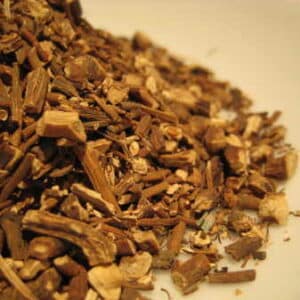Silvery Wormwood Herb Cut-Artemisia argyi-Ai Rong
£9.50
Silvery Wormwood
Artemisia argyi
Also known as Chinese Mugwort or Ai Rong
100 grams
Artemisia argyi is commonly known as Silvery Wormwood or Chinese Mugwort in the West. It is a herbaceous perennial plant with a long creeping rhizome. It is native to China, Korea, Mongolia, Japan, and the Russian Far East
The product is easily recognisable as a processed product known as “Floss” as per the product photo shown whereas Ai Ye is easily recognisable as just dried leaf
in Japan it is known as Gaiyou.
It grows to about one metre tall, with short branches and a creeping rhizome. The stalked leaves are ovate, deeply divided and covered in small, oil-producing glands, pubescent above and densely white tomentose below. The lower leaves are about six centimetres long, bipinnate with wide lanceolate lobes and short teeth along the margins. The upper leaves are smaller and three-partite, and the bracteal leaves are simple, linear and lanceolate. The inflorescence is a narrow leafy panicle. The individual flowers are pale yellow, tubular, and clustered in spherical turned-down heads. The central flowers are bisexual while the marginal flowers are female. The petals are narrow and folded cylindrically and the bracts have a cobwebby pubescence. The whole plant is strongly aromatic.
Traditional Uses for Silvery Wormwood Herb:-
The herb is used in herbal medicine for conditions of the liver, spleen and kidney.It is a common flavouring and colourant in the Chinese dish qīng tuán
The leaves are gathered in spring and summer when the plant is in flower and then dried in the shade.
In traditional Chinese medicine, they are considered to have bitter, pungent and warm properties and to be associated with the liver, spleen and kidneys. The leaves are used as an antiseptic, expectorant, febrifuge and styptic.
The herb is considered to increase the blood supply to the pelvic region and stimulate menstruation, help treat infertility, dysmenorrhea, asthma and coughs.
Another use is in moxibustion, a form of healing in which the herb is burned in cones or sticks or on the tip of an acupuncture needle.
Boiled water can be poured onto the ground up leaves and used in a decoction, alone or with other substances, and the fresh leaf can be crushed and blended and a juice extracted.
A volatile oil can be extracted from the leaves and used in the treatment of asthma and bronchitis for which purpose it is sprayed onto the back of the throat and brings rapid relief. The leaves have an antibacterial action and have been shown to be effective against Staphylococcus aureus, Bacillus dysenteriae, Bacillus subtilis, Bacillus typhi, Escherichia coli and Pseudomonas
| Country of Origin | China |
|---|---|
| Batch Code | JI330380A |
| Harvest | Summer 2023 |
| Best Before | Dec 26 |





